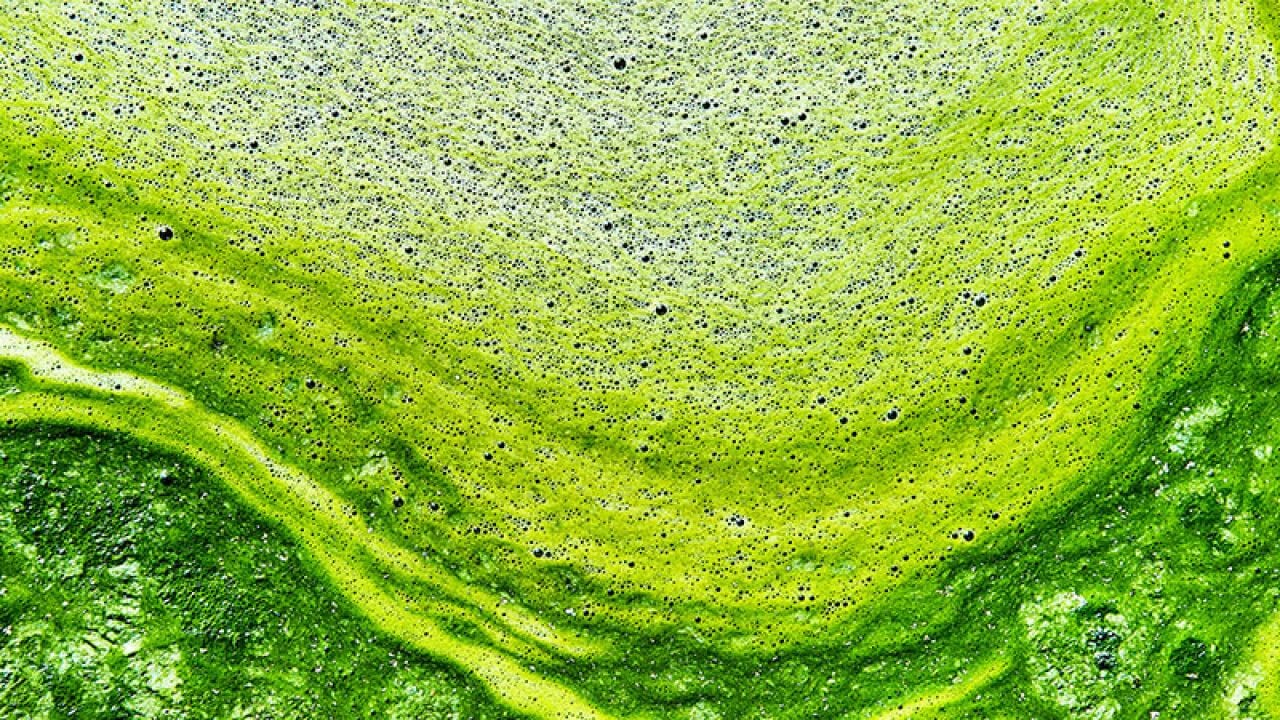
In the last few weeks of August, your dog may face a higher risk of algae poisoning than ever.
In many places, public health advisories limit lake activities to the shore for dogs and people, as tiny microorganisms overtake freshwater bodies in floating mats of scum.
These microorganisms are often referred to as blue-green algae, but they are actually a type of bacteria called cyanobacteria that make energy from light. They grow rapidly during the summer, when warm temperatures and excess nitrogen and phosphorus enter bodies of freshwater, creating the perfect conditions for algae to grow into harmful algae blooms.
Overgrowth of cyanobacteria can create public health hazards when they produce dangerous toxins that can poison people and animals, particularly dogs, through the air and water.
A new report from the Centers for Disease Control and Prevention details harmful algae blooms that appeared nationwide in 2021. Public health agencies in 16 states voluntarily reported 368 harmful algae bloom events and human and animal cases of illnesses for inclusion in the report. These events are instances when a visual bloom was identified or toxins in food or water were detected.
Dogs are especially vulnerable
The most harmful algae blooms occurred in August, according to the report when 86 percent of animal illnesses took place. Human illnesses peaked in June, when 33 percent of reports occurred.
There were 117 cases of human illness and at least 2,715 animal cases. Twenty-one groups of animals were reported to the CDC, ranging in size from just two animals being affected at once to 2,000, when a colony of bats died from toxic algae exposure.
Dogs are especially vulnerable to toxic algae contamination, making up 100 percent of illnesses in domestic pets in the CDC report. They are more likely to drink freshwater while swimming or lick algae from their fur. Cyanobacteria is highly toxic to dogs – they can become ill at lower levels of exposure or even die within hours.
Of the reported events, 90 percent happened in freshwater lakes or reservoirs. In many cases, the water was green, and in 91 percent, visible scum or algae matter floated in the water.
The harm of toxic algae blooms
Exposure to toxic algae blooms can cause mild to extreme health effects, depending on the type of toxin and amount of exposure.
For people, the most common signs of illness reported to the CDC were stomach pain, headache, dizziness, vomiting, diarrhea and liver damage. Inhaling contaminated air can result in skin, eye, nose, throat and lung irritation.
Dogs and other pets might vomit or show signs of lethargy.
Touching or swimming in contaminated water or inhaling or ingesting toxins can all result in illness.
Avoid algae blooms in the last days of summer
Before recreating in or near lakes, check local news reports, public health websites and park alerts for toxic algae blooms in your area.
Signs of a toxic algae bloom include a rotten smell or suspicious blue-green material that looks like scum or paint floating mat-like on the water's surface. Sometimes dead fish float near the shore where there are toxic algae blooms. As algae decomposes, the oxygen in the water is used up, leading to fish kills.
Not all algae blooms produce toxins and are dangerous. Only water tests can show which are and which aren't.
If you see something that seems like an algae bloom, don’t swim in or spend long amounts of time near the water – and don’t let your dog touch or drink it. Contact your local or state public health authority to get the water tested.
Preventing algae blooms
Fertilizers and animal manure in farm runoff pollute waterways with nitrogen and phosphorus, creating the perfect conditions for cyanobacteria to thrive. To stop these public health hazards, farmers need to implement practices that prevent farm runoff from polluting waterways.
The climate crisis has extended the season of higher temperatures when algae blooms are likely to occur. Periods of drought followed by extreme precipitation in areas with agricultural landscapes like the Midwest wash large amounts of fertilizer and manure into bodies of water.
Federal farm policy must be reformed to require farmers to adopt practices that reduce farm runoff. Toxic algae blooms are as much a public health hazard as they are an environmental issue. Measures that reduce runoff from farm fields and control algae outbreaks will ensure the safety of our drinking water and recreational waterways.



